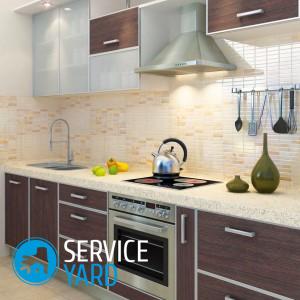Glass-ceramic cookware - how to choose?

After the miracle of modern technology has appeared in your kitchen - a glass-ceramic hob, the costs associated with the purchase of suitable utensils become inevitable. Be prepared for the fact that you will no longer need your old pots and pans that you have been using successfully for years. At least because kitchen utensils for glass ceramics should have very definite properties. What kind of cookware is needed for a glass-ceramic plate, how to choose high-quality, which one should not be taken - you will learn about all this from this article.
to contents ↑Special dishes - is it really needed?
Can all the same be avoided the additional costs, and quite significant? It turns out - no. Utensils must satisfy a number of fairly stringent requirements:
- Flat bottom. The use of objects with a flat bottom allows you to reduce energy consumption and increase the life of the stove itself. The slightest bend in the bottom area creates a layer of air between the pan and the surface of the electric stove. This reduces the heat absorption of the dishes and can lead to overheating of the appliance.
- Special marking. The icon on which the glass-ceramic surface is depicted means that your purchase fully meets all the requirements for glass-ceramic ware.
- Ferromagnetic properties. This is true for “induction”. Glass-ceramic induction cookers they can only recognize such pans and pans. During operation of the electric stove, the cooking surface does not heat up. Only the burner and dishes located on it are heated.
- Matching burner and cookware sizes. This will help to prevent excessive heating of the surface and quick breakdown of the device.
How to choose a pan for a glass-ceramic stove?
Parameters of kitchen utensils for glass ceramics are very special. Be guided when choosing such moments.
Materials:
- Stainless steel. This is the best option if you need to choose dishes for a glass-ceramic stove. The material has good thermal conductivity, makes it possible to use glass ceramics with maximum efficiency. Stainless steel items are excellently cleaned and look great. The combination of the dark surface of the stove with pots shining with chrome gives the kitchen a respectable look.
- Aluminum. A fairly common material with a good indicator of thermal conductivity.
Important! There is also a minus for aluminum - the bottom of the dishes needs care to preserve it without scratches. To avoid this problem, purchase kitchen utensils with steel bottom.
- Enamelled steel. In principle, this option is possible. Moreover, you can choose pots that perfectly match the design of the kitchen.
Important! Enameled dishes sometimes have chips on the surface. For a glass-ceramic hob this is unacceptable, so you have to choose with special care.
- Teflon and ceramic coated aluminum. It is an acceptable option, especially considering the high thermal conductivity of the material.
- Cast iron. A cast-iron frying pan for a glass-ceramic stove is a perfectly acceptable option under certain conditions. When purchasing dishes with thick walls made of cast iron, make sure that the bottom is perfectly flat.
Important! Cast iron has the same drawback as enameled cookware - possible chips.
- Heat resistant glass. Such pans have a beautiful and original appearance, but for cooking food on glass ceramics this is not the best option. The reason is the low thermal conductivity of the glass. In principle, this is an acceptable option, but the energy consumption will increase.
Important! Glass is not suitable for induction electric stoves in any case.
Wall thickness
The best option - pots with thick walls. If you neglect this rule, you will hear unpleasant noise from a pan heating up on the stove.
Cap
It is desirable that it fit snugly against the walls of the vessel. A useful option is the presence in the lid of the opening for the exit of excess steam generated during cooking.
Bottom
In addition to a perfectly flat surface, quite stringent requirements are imposed on its thickness - from 7 mm. The pan with a thick bottom does not deform, can withstand significant heat loads.
The best option is a multilayer bottom of various metals:
- 3 layers - 2 layers of stainless steel and 1 - aluminum.
- 5 layers - 3 layers of aluminum and 2 stainless steel.
to contents ↑Important! If the electric stove is induction, the presence of ferromagnetic properties of the material of the bottom of the pan for glass-ceramic plates is mandatory.
What should not be?
Let's consider the options that are unacceptable for a ceramic glass hob:
- With an open bottom made of copper or aluminum. Traces will remain on the stove.
- Dishes that are deformed by heat.
- With an uneven or embossed bottom surface.
Stock footage
Profitable purchase - a set of several items of different diameters. This will allow the use of burners without problems. We hope that these tips will help you navigate a huge number of offers and choose the best pans for glass-ceramic plates.
- How to choose a vacuum cleaner taking into account the characteristics of the house and coatings?
- What to look for when choosing a water delivery
- How to quickly create comfort at home - tips for housewives
- How to choose the perfect TV - useful tips
- What to look for when choosing blinds
- What should be running shoes?
- What useful things can you buy in a hardware store
- Iphone 11 pro max review
- Than iPhone is better than Android smartphones




